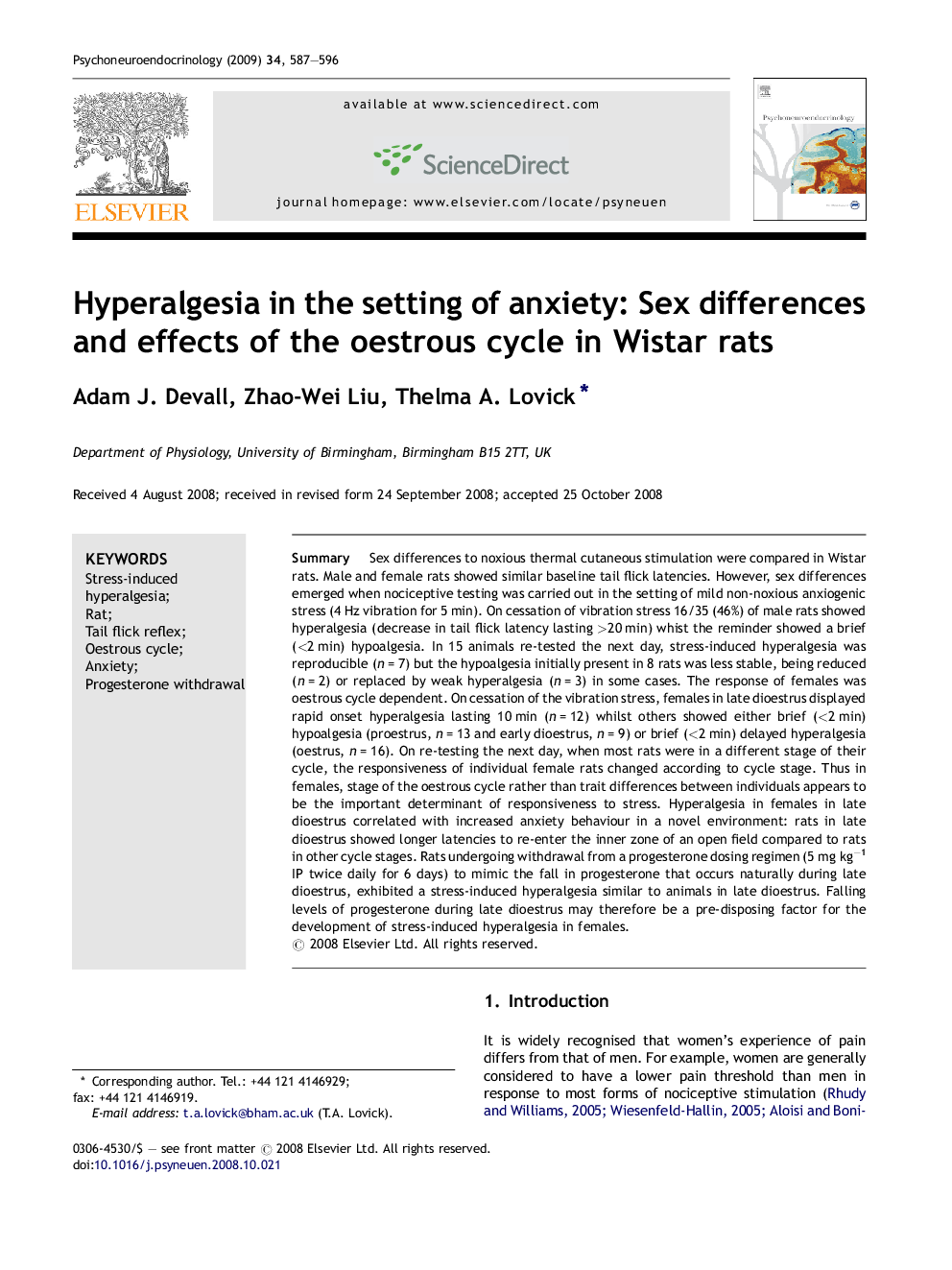| کد مقاله | کد نشریه | سال انتشار | مقاله انگلیسی | نسخه تمام متن |
|---|---|---|---|---|
| 336741 | 547198 | 2009 | 10 صفحه PDF | دانلود رایگان |

SummarySex differences to noxious thermal cutaneous stimulation were compared in Wistar rats. Male and female rats showed similar baseline tail flick latencies. However, sex differences emerged when nociceptive testing was carried out in the setting of mild non-noxious anxiogenic stress (4 Hz vibration for 5 min). On cessation of vibration stress 16/35 (46%) of male rats showed hyperalgesia (decrease in tail flick latency lasting >20 min) whist the reminder showed a brief (<2 min) hypoalgesia. In 15 animals re-tested the next day, stress-induced hyperalgesia was reproducible (n = 7) but the hypoalgesia initially present in 8 rats was less stable, being reduced (n = 2) or replaced by weak hyperalgesia (n = 3) in some cases. The response of females was oestrous cycle dependent. On cessation of the vibration stress, females in late dioestrus displayed rapid onset hyperalgesia lasting 10 min (n = 12) whilst others showed either brief (<2 min) hypoalgesia (proestrus, n = 13 and early dioestrus, n = 9) or brief (<2 min) delayed hyperalgesia (oestrus, n = 16). On re-testing the next day, when most rats were in a different stage of their cycle, the responsiveness of individual female rats changed according to cycle stage. Thus in females, stage of the oestrous cycle rather than trait differences between individuals appears to be the important determinant of responsiveness to stress. Hyperalgesia in females in late dioestrus correlated with increased anxiety behaviour in a novel environment: rats in late dioestrus showed longer latencies to re-enter the inner zone of an open field compared to rats in other cycle stages. Rats undergoing withdrawal from a progesterone dosing regimen (5 mg kg−1 IP twice daily for 6 days) to mimic the fall in progesterone that occurs naturally during late dioestrus, exhibited a stress-induced hyperalgesia similar to animals in late dioestrus. Falling levels of progesterone during late dioestrus may therefore be a pre-disposing factor for the development of stress-induced hyperalgesia in females.
Journal: Psychoneuroendocrinology - Volume 34, Issue 4, May 2009, Pages 587–596